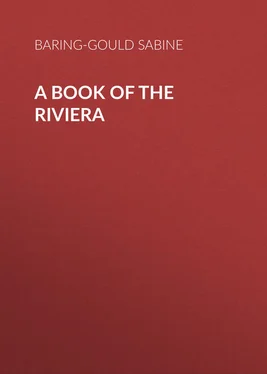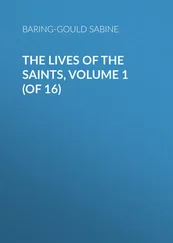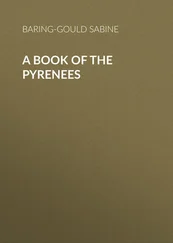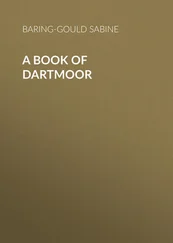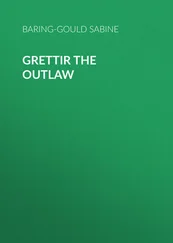Sabine Baring-Gould - A Book of The Riviera
Здесь есть возможность читать онлайн «Sabine Baring-Gould - A Book of The Riviera» — ознакомительный отрывок электронной книги совершенно бесплатно, а после прочтения отрывка купить полную версию. В некоторых случаях можно слушать аудио, скачать через торрент в формате fb2 и присутствует краткое содержание. Жанр: foreign_antique, foreign_prose, на английском языке. Описание произведения, (предисловие) а так же отзывы посетителей доступны на портале библиотеки ЛибКат.
- Название:A Book of The Riviera
- Автор:
- Жанр:
- Год:неизвестен
- ISBN:нет данных
- Рейтинг книги:5 / 5. Голосов: 1
-
Избранное:Добавить в избранное
- Отзывы:
-
Ваша оценка:
- 100
- 1
- 2
- 3
- 4
- 5
A Book of The Riviera: краткое содержание, описание и аннотация
Предлагаем к чтению аннотацию, описание, краткое содержание или предисловие (зависит от того, что написал сам автор книги «A Book of The Riviera»). Если вы не нашли необходимую информацию о книге — напишите в комментариях, мы постараемся отыскать её.
A Book of The Riviera — читать онлайн ознакомительный отрывок
Ниже представлен текст книги, разбитый по страницам. Система сохранения места последней прочитанной страницы, позволяет с удобством читать онлайн бесплатно книгу «A Book of The Riviera», без необходимости каждый раз заново искать на чём Вы остановились. Поставьте закладку, и сможете в любой момент перейти на страницу, на которой закончили чтение.
Интервал:
Закладка:
The liturgy was not fixed and uniform. In many secondary points each Church had its own use. Where most liberty and variety existed was in the hymns. The singing of hymns was not formally introduced into the offices of the Church till the tenth century; but every church had its collection of hymns, sung by the people at vigils, in processions, intercalated in the offices. In Normandy it was a matter of complaint that whilst the choir took breath the women broke in with unsuitable songs, nugacis cantalenis . At funerals such coarse ballads were sung that Charlemagne had to issue orders that where the mourners did not know any psalm they were to shout Kyrie eleison , and nothing else. Agobard, Bishop of Lyons, A.D. 814-840, says that when he entered on his functions he found in use in the church an antiphonary compiled by the choir bishop, Amalric, consisting of songs so secular, and many of them so indecent, that, to use the expression of the pious bishop, they could not be read without mantling the brow with shame.
One of these early antiphonaries exists, a MS. of the eleventh century belonging to the church of S. Martial. Among many wholly unobjectionable hymns occurs a ballad of the tale of Judith; another is frankly an invocation to the nightingale, a springtide song; a third is a dialogue between a lover and his lass.
It is in the ecclesiastical hymns, religious lessons, and legends couched in the form of ballads, coming into use in the eighth and ninth centuries, that we have the germs, the rudiments, of a new literature; not only so, but also the introduction of formal music gradually displacing music that is recitative.
Of melodies there are two kinds, the first used as a handmaid to poetry; in it there is nothing formal. A musical phrase may be repeated or may not, as required to give force to the words employed. This was the music of the Greek and Roman theatre. The lyrics of Horace and Tibullus could be sung to no other. This, and this alone, was the music adopted by the Church, and which we have still in the Nicene Creed, Gloria, Sanctus, and Pater Noster. But this never could have been the music of the people – it could not be used by soldiers to march to, nor by the peasants as dance tunes.
Did rhythmic music exist among the ancients side by side with recitative? Almost certainly it did, utterly despised by the cultured.
When Julius Cæsar was celebrating his triumph at Rome after his Gaulish victories, we are informed that the soldiery marched singing out: —
“Gallias Cæsar subegit
Mithridates Cæsarem.
Ecce Cæsar nunc triumphat,
Qui subegit Gallias,
Nicomedes non triumphat,
Qui subegit Cæsarem.”
This must have been sung to a formal melody, to which the soldiers tramped in time.
So also Cæsar, in B.C. 49, like a liberal-minded man, desired to admit the principal men of Cisalpine Gaul into the Senate. This roused Roman prejudice and mockery. Prejudice, because the Gauls were esteemed barbarians; mockery, because of their peculiar costume – their baggy trousers. So the Roman rabble composed and sang verses, “ illa vulgo canebantur .” These may be rendered in the same metre: —
“Cæsar led the Gauls in triumph,
Then to Senate-house admits.
First must they pull off their trousers,
Ere the laticlavus fits.”
Now, it may be noted that in both instances the rhythm is not at all that of the scientifically constructed metric lines of Horace, Tibullus, and Catullus, but is neither more nor less than our familiar 8.7. time. The first piece of six lines in 8.7. is precisely that of “Lo! He comes in clouds descending.” The second of four lines is that of the familiar Latin hymn, Tantum ergo , and is indeed that also of our hymn, “Hark! the sound of holy voices.” 4 4 So Virgil speaks of the soldiers singing as they marched, according to rhythmic music — “With measured pace they march along, And make their monarch’s deeds their song.” Æneid , viii., 698-9.
Nor is this all. Under Cæsar’s statue were scribbled the lines of a lampoon; that also was in 8.7. Suetonius gives us another snatch of a popular song relative to Cæsar, in the same measure. Surely this goes to establish the fact that the Roman populace had their own folk-music, which was rhythmic, with tonal accent, distinct from the fashionable music of the theatre.
Now, it is quite true that in Latin plays there was singing, and, what is more, songs introduced. For instance, in the Captivi of Plautus, in the third act, Hegio comes on the stage singing —
“Quid est suavius quam
Bene rem gerere bono publico, sicut feci
Ego heri, quum eius hosce homines, ubi quisque
Vident me hodie,” etc.
But I defy any musician to set his song to anything else but recitative; the metre is intricate and varied.
Now of rhythmic melody we have nothing more till the year A.D. 386, when, at Milan, the Empress Justina ordered that a church should be taken from the Catholics and be delivered over to the Arians.
Thereupon S. Ambrose, the bishop, took up his abode within the sacred building, that was also crowded by the faithful, who held it as a garrison for some days. To occupy the people Ambrose hastily scribbled down some hymns – not at all in the old classic metres, but in rhythmic measure – and set them to sing these, no doubt whatever, to familiar folk-airs. Thirteen of the hymns of S. Ambrose remain. His favourite metre is —
“Te lucis ante terminum,”
our English Long Measure. And what is more, the traditional tunes to which he set these hymns have been handed down, so that in these we probably possess the only ascertainable relics of Roman folk-airs of the fourth century, and who can tell of how much earlier?
Now, in ancient days the people were wont to crowd to church on the vigils of festivals and spend the night in or outside the churches in singing and dancing. To drive out the profane and indelicate songs, the clergy composed hymns and set them to the folk-airs then in vogue. These hymns came into use more and more, and at length simply forced their way into the services of the Church – but were not recognised as forming a legitimate part of it till the tenth century.
The ecclesiastical hymns for the people, after having been composed in barbarous Latin, led by a second step to the vernacular Romance. The transition was easy, and was, indeed, inevitable. And in music, recitative fell into disfavour, and formal music, to which poetry is the handmaid, came into popular usage exclusively; recitative lingering on only in the liturgy of the Church. The Provençal language was now on its way to becoming fixed and homogeneous; the many local variations found in the several districts tending to effacement.
Then came the golden age of the Troubadours, who did more than any before to fix the tongue. In the twelfth century the little courts of the Provençal nobles were renowned for gallantry. In fact, the knights and barons and counts of the South plumed themselves on setting the fashion to Christendom. In the South there was none of that rivalry existing elsewhere between the knights in their castles and the citizens in the towns. In every other part of Western Europe the line of demarcation was sharp between the chivalry and the bourgeoisie. Knighthood could only be conferred on one who was noble and who owned land. It was otherwise in the South; the nobility and the commercial class were on the best of terms, and one great factor in this fusion was the Troubadour, who might spring from behind a counter as well as from a knightly castle.
The chivalry of the South, and the Troubadour, evolved the strange and, to our ideas, repulsive theory of love, which was, for a time, universally accepted. What originated it was this:
Читать дальшеИнтервал:
Закладка:
Похожие книги на «A Book of The Riviera»
Представляем Вашему вниманию похожие книги на «A Book of The Riviera» списком для выбора. Мы отобрали схожую по названию и смыслу литературу в надежде предоставить читателям больше вариантов отыскать новые, интересные, ещё непрочитанные произведения.
Обсуждение, отзывы о книге «A Book of The Riviera» и просто собственные мнения читателей. Оставьте ваши комментарии, напишите, что Вы думаете о произведении, его смысле или главных героях. Укажите что конкретно понравилось, а что нет, и почему Вы так считаете.
